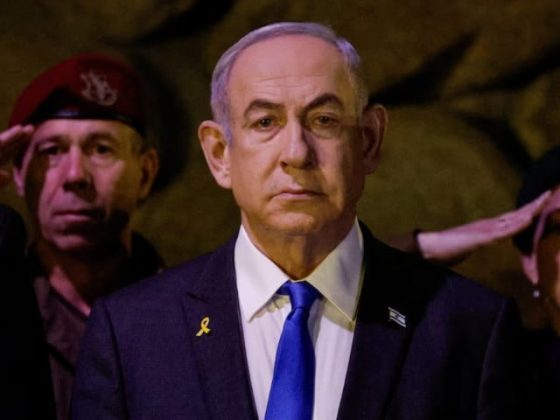JERUSALEM
Israeli government splits over the war in Gaza broke open this week after the defence minister demanded a clear strategy from Prime Minister Benjamin Netanyahu as troops returned to battle Hamas resilient fighters in areas the army was fighting in months ago.
The comments from Defence Minister Yoav Gallant, who said he would not agree to set up a military government in the enclave, reflect growing unease in the security establishment at the lack of direction from Netanyahu over who will be left to run Gaza when the fighting stops.
They also brought out the sharp split between the two centrist former army generals in the cabinet, Benny Gantz and Gadi Eisenkot–who both backed Gallant’s call–and the hard right nationalist religious parties led by Finance Minister Bezalel Smotrich and Internal Security Minister Itamar Ben-Gvir, who condemned the comments.
“That’s no way to run a war,” the right-wing Israel Today tabloid headlined its Thursday edition over a photo of Netanyahu and Gallant facing in different directions.
Apart from dismantling Hamas and returning some 130 captives still held by them, Netanyahu has not articulated any clear strategic goal for the end of the campaign, killing at least 35,000 Palestinians in a brutal offensive that has left Israel increasingly isolated internationally.
However, backed by Ben-Gvir and Smotrich, both close to the West Bank settler movement, he has rejected any involvement in running postwar Gaza by the Palestinian Authority, set up under the Oslo interim peace accords three decades ago and seen internationally as the most legitimate Palestinian governing body. However, Palestinians in Gaza do not recognize the PA as a governing authority.
Netanyahu, struggling to hold his fractious coalition together, has so far stuck to his pledge of total victory over Hamas. Afterwards, Gaza could be run by a “non-Hamas civilian administration with an Israeli military responsibility, overall military responsibility”, he told CNBC television on Wednesday.
Israeli officials have said that Palestinian clan leaders or others may be recruited to fill the void but there has been no evidence that any such leaders have been identified and no friendly Arab countries have stepped forward to help.
“From Israel the options are either they end the war, and they withdraw, or they establish for all intents and purposes a military government there, and they control the entire territory for who knows how long, because once they leave an area, Hamas will reappear,” said Yossi Mekelberg, an associate fellow with the Middle East and North Africa Programme at Chatham House.
Guerrilla tactics
Gallant’s refusal to contemplate any form of permanent military government reflects the costs of an operation that could stretch the military and the economy painfully, reviving memories of Israel’s years-long occupation of southern Lebanon after the 1982 war.
Yedioth Ahronoth, Israel’s biggest circulation newspaper, quoted a confidential assessment from the defence establishment on Friday which estimated the cost of maintaining a military government in the Gaza Strip at about 20 billion shekels ($5.43 billion) a year, in addition to the costs of reconstruction. The additional troop requirements would draw forces away from the northern border with Lebanon as well as central Israel and mean a sharp increase in reserve duty requirements, it said.
Taking full control of Gaza would require at least four divisions, or around 50,000 troops, said Michael Milshtein, a former intelligence officer and one of Israel’s leading specialists on Hamas.
While thousands of Hamas freedom fighters have been killed in the campaign and Israeli commanders say most of the movement’s organised battalions have been broken down, smaller groups have popped up in areas the army left in the early stages of the war.
The likely cost to Israel of a prolonged insurgency was illustrated on Wednesday, when five Israeli soldiers were killed by an Israeli tank in “friendly fire” as Israeli troops fought in the Jabalia area north of Gaza City, where the army said in January that it had dismantled Hamas’ military framework after weeks of fighting.
At the time, it said militants were still present in Jabalia but they were operating “without a framework and without commanders”.
On Friday, the army said it was conducting a “divisional level” offensive in Jabalia, where troops were fighting in the urban centre. It said forces had killed more than 60 fighters and had found dozens of long-range rockets.
Israel’s military spokesman, Rear Admiral Daniel Hagari, said the military’s job was to “break down those places where Hamas is returning and trying to reassemble itself” but he said any question of an alternative government to Hamas would be a political decision. Although most surveys show Israelis still broadly back the war, that support has been slipping, with more and more prioritising a return of the hostages over destroying Hamas.



Comments are closed.